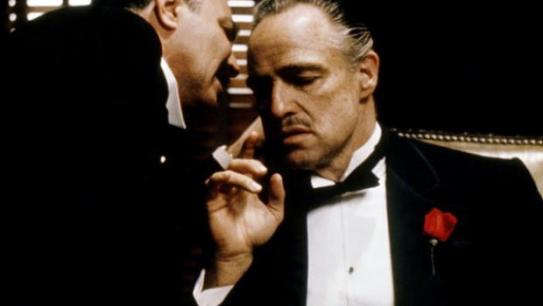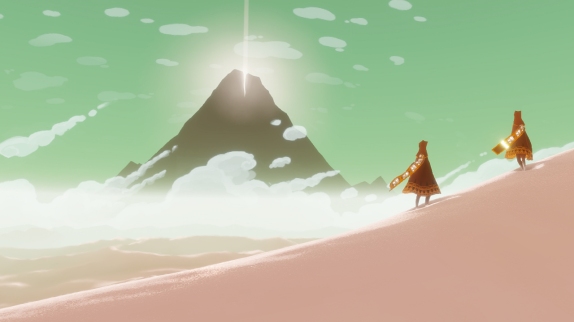The opening scene of the Godfather, introducing Don Corleone
The Sistine Chapel, the Moonlight Sonata, The Godfather: all examples of great works of art. Despite the variance in style between the three, there are few that would argue to the contrary. This begs the question, what is art? Today I am going to attempt to answer this question as well as another: can video games be considered as a form of art? The Oxford English Dictionary defines art as:
The expression or application of human creative skill and imagination, typically in a visual form such as painting or sculpture, producing works to be appreciated primarily for their beauty or emotional power
This definition mentions that art is usually in a visual form, even citing examples, but it does not exclude the idea of music or literature falling into the category of art. What is truly important to take away from this definition is that the expression that is art is one that people can experience and appreciate for the beauty it holds, so much so that it can incite strong emotional reactions in them. This makes it very subjective, as something can be beautiful to one person yet ugly to another. Lets look at another definition, this time from the Merriam-Webster dictionary:
Something that is created with imagination and skill and that is beautiful or that expresses important ideas or feelings
Both the Oxford and Merriam-Webster dictionaries define art as the skilled and imaginative expression of an idea into something that is beautiful and evokes emotions. There are many different definitions of art, but for the sake of simplicity, we will use this one. The question that is posed now is: can video games present ideas in a way that can be considered beautiful and evoke strong emotions in people? The only way to answer this is to analyze different video games to see if they pass the test.
Journey by thatgamecompany
It’s not about the destination, but rather the journey
Journey is arguably the one of the easiest games to identify as art, due in part to its simplistic nature. With no introduction, the player is dropped into the middle of a desert as a nameless and hooded figure. The only direction the player is given is a bright light atop a mountain in the distance. Along the way you find various ruins containing wall engravings that unravel the story of what happened to the civilization that left it all behind. This is all done without a single word uttered throughout the game.
The only sounds that come out  from the hooded figure are chirps that are used to interact with the world, but despite this, Journey manages to tell a beautiful story. The stunning visuals, moving soundtrack, and a slow build up, all combine to make for a truly powerful experience. The feeling is even more intense if the player meets someone online. With no way of talking to the person or getting to know they are, you set off to help each other get to the top of the mountain. Despite not being able talk or talk through text, you develop a connection with the person by communicating through chirps and making your way through obstacles together. Before you know it, you become attached, worried by the possibility of losing each other in the vast sea of sand.
from the hooded figure are chirps that are used to interact with the world, but despite this, Journey manages to tell a beautiful story. The stunning visuals, moving soundtrack, and a slow build up, all combine to make for a truly powerful experience. The feeling is even more intense if the player meets someone online. With no way of talking to the person or getting to know they are, you set off to help each other get to the top of the mountain. Despite not being able talk or talk through text, you develop a connection with the person by communicating through chirps and making your way through obstacles together. Before you know it, you become attached, worried by the possibility of losing each other in the vast sea of sand.
Without spoiling the ending, you eventually reach a point where you find yourself looking on in helplessness, only to be astounded by the beauty that unfolds immediately after. When the credits roll, you can’t help but think about what the game actually means, which is a metaphor for the journey that everyone takes in life. From the playful years of our youth sliding through the sand, to the deterioration of health in the snowstorm atop the mountain. The companion you may or may not have found serves as the partner that joins you through the good and bad memories. The game portrays it all in a beautiful, and dare I say, artistic way.
A behind the scenes look at the orchestral music of Journey
The Last of Us by Naughty Dog
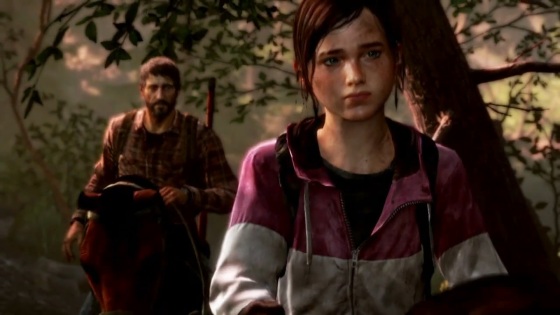
Joel and Ellie, looking as ordinary as any of us
The second game that will be analyzed is a very well known one within the game industry. To an outsider, this game looks like any other “end of the world” story, but anyone that played past even the intro learned that it was much more than that. The Last of Us does have the basic characteristics of a zombie apocalypse: infected humans eating any living thing in sight, nature is slowly reclaiming cities, and the rules of society are replaced by survival of the fittest.
The first thing that sets it apart from all the rest is that the setting and circumstances are not only possible, but also probable. When news of an outbreak broke out, nobody was sure as to what the original cause of it was and more importantly, not many people cared. After the initial outbreak, the military took all precautions necessary to stop the spread of infection. This ranged from setting up quarantine zones to killing anyone they so much as suspected of being a carrier of the disease, whether they had proof of it or not. Eventually the military took full control of the government because it was unhappy with how slow politicians were at making decisions. Of course not everyone was thrilled about being put under martial law, so they fought back. These are all things that are within the realm of possibility. Even the condition in the game that causes humans to become violent is based on a parasitic fungus, Cordyceps, that takes over the minds’ of insects. Each strain of Cordyceps specializes in attacking a different species of insect, working as a counter balance to overpopulation. The question that follows is, what if a mutated strain of Cordyceps infected humans?
The BBC documentary that Naughty Dog took inspiration from
The spread of infection and the human race’s attempt at curing that infection are a part of the story, but not the main focus. Rather, it serves as a medium through which to tell the story for Naughty Dog. Simply put, The Last of Us is about how we as human beings act when the rules of the game change and we are no longer at the top of the food chain. If society were to crumble, our loved ones to die, and the food chain restructured, what would we do?
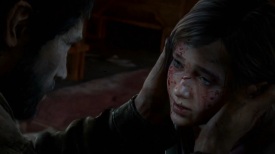 Throughout the game you play as two characters, Ellie and Joel. Ellie is a young teenage girl that was born into the post-apocalyptic world without having known what life was like before everything went to hell. Joel is a man that survived for 20 years in this dangerous world after having lost the person he cherished most, his daughter. At first, the two characters have a very distrustful relationship, but as they cross the country, the struggles they face bring them together, so much so that they are willing to put everything on the line for each other. The Last of Us portrays the most vile side of human beings but also the admirable side, sometimes even in the same character. Add in the brilliant voice acting, the beautiful cinematics, and the masterfully orchestrated music by composer Gustavo Santaolalla and you not only have a masterpiece of a game, but an experience to remember.
Throughout the game you play as two characters, Ellie and Joel. Ellie is a young teenage girl that was born into the post-apocalyptic world without having known what life was like before everything went to hell. Joel is a man that survived for 20 years in this dangerous world after having lost the person he cherished most, his daughter. At first, the two characters have a very distrustful relationship, but as they cross the country, the struggles they face bring them together, so much so that they are willing to put everything on the line for each other. The Last of Us portrays the most vile side of human beings but also the admirable side, sometimes even in the same character. Add in the brilliant voice acting, the beautiful cinematics, and the masterfully orchestrated music by composer Gustavo Santaolalla and you not only have a masterpiece of a game, but an experience to remember.
Metal Gear Solid by Kojima Productions
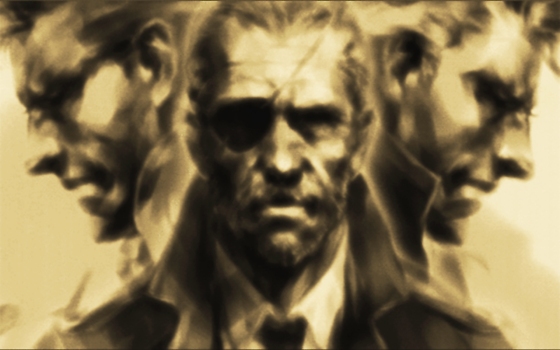
The apple doesn’t fall far from the tree
The third and last example in our look into the artistry of the medium is not a game, but a series of games. Metal Gear Solid is arguably the most complicated and fleshed out story in video gaming. Spanning over a 70 year period and seamlessly incorporated into history and the world we know, MGS explores a variety of important topics that range from cloning to the evolution of war. It is impossible to tell the story of MGS while still keeping it brief, so instead I will outline the first game in the chronology to give a glimpse into the mind of creator Hideo Kojima.
*Minor spoilers for the series below*
The series starts with Metal Gear Solid 3: Snake Eater where you control code name Naked Snake. The year is 1964 and the United States and Soviet Union are in the middle of a Cold War. Snake is a seasoned soldier that has been charged with a top secret sneaking mission: retrieve a Soviet rocket scientist who seeks asylum in the United States, effectively making him a defector. Snake eventually finds the scientist but as he is helping him escape, something unexpected happens: his mentor and a legendary special forces operative by the name of The Boss stops him. Almost killing Snake in the process, The Boss takes the scientist and defects over to the Soviets to work alongside a Colonel by the name of Volgin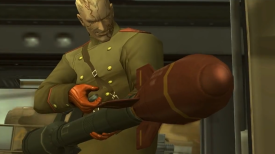 . Soon after this, Volgin fires a smaller version of the Davey Crockett nuclear weapon at a research facility inside the Soviet Union, which sets off a chain of events that forces Snake to once again head back behind the iron curtain.
. Soon after this, Volgin fires a smaller version of the Davey Crockett nuclear weapon at a research facility inside the Soviet Union, which sets off a chain of events that forces Snake to once again head back behind the iron curtain.
Snake has to rely on camouflage, his survival instincts, and military training to traverse the jungle and find The Boss, all the while trying to figure out why she betrayed her country. Long story short, Snake travels through forests and deserts battling 5 enemies with superhuman abilities. These 5 men all served under The Boss’ Cobra Unit during World War II during the Battle of Stalingrad, each with a name suited to the emotion they evoked in others on the battlefield.
- The Pain could control and mold hornets by manipulating pheromones and a queen hornet in a variety of ways. When fighting Snake he would use them to shield himself, boost the effect of his grenades, and shoot hornets out of his Tommy Gun.
- The Fear had superhuman agility and the ability to move his joints through an unnatural range of motion, sometimes appearing like a spider in form. At the same time though he looked aesthetically like a snake thanks to his eyes and tongue.
- The End was said to be the most talented sniper the world has ever seen. Without a need for a spotter and the ability to stay in the same position waiting for his target for weeks, he is the perfect sniper. What allowed him to do this was the fact that his body was photosynthetic in nature, sustaining his energy through sunlight.
- The Fury is the first cosmonaut to travel into space, even before Yuri Gagarin, but due to unfortunate circumstances upon re-entry into the atmosphere, the news was never made public. A mistake was made and the man’s body was set on fire, leaving him with burns all over his body. The experience left him with PTSD and a burning hatred that acts as a metaphor for fire, his weapon of choice.
- The Sorrow was a medium who would use his powers to not only talk to the dead for battlefield information, but also become one with the spirits of the dead, gaining their skills and abilities. In the game you do not fight him like you do the other four as he is dead. The Boss’ lover when alive, he reveals the past these two had during your fight.



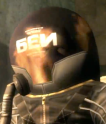

From left to right: Pain, Fear, End, Fury, Sorrow
These men served under The Boss for years during World War II and in their final moments you can really sense the comradery and admiration they had for each other. This game, just like with the series as a whole, does not glorify war, it instead looks at the subject from multiple perspectives ranging from the espionage and deceit of governments, to the scars that war leaves on soldiers and civilians alike. MGS does not shy away from raw portrayals of the worst in humans and it does it with a style that is distinctly Metal Gear Solid. That being said, Kojima Productions does not use violence just for the sake of violence, but to create a sense of realism and tell a story, and as with every story, it has an end.
Metal Gear Solid is no exception to this: questions are answered and the player is left with some closure, or so they think. Oftentimes the final conversation in an MGS game raises more questions than it answers, acting as a cliffhanger. For veterans of the series these conversations are expected but every time the genius that is Hideo Kojima shocks the player. That is what fans of the series live for, the mystery and complexity that can only come from a Metal Gear Solid game.
He wasn’t joking about being mad, was he?
Final Words
This all started with the question: what is art? Even though a standard definition has been established with the help of the Oxford and Merriam-Webster dictionaries, the problem is in the way different people perceive art. Before we address that issue though, let us restate the original question: are these games the skilled and imaginative expression of an idea into something that is beautiful and evokes emotions? Here is where the problem lies: people hold different opinions on what is beautiful. The same holds true when calling something imaginative or claiming that it can evoke emotions. It is a very subjective method by which to measure something.
So how exactly does one identify something as art? The one thing that is objective in the definition is that it requires skill to create art. It is undeniable that the above video games required a great deal of skill not only on the management side, but also in regard to individual talent. Like a film, a video game requires a great deal of synchronization between all the moving parts. The story department needs to communicate with the music department so the right tone is set for each scene. At the same time the graphics department needs to work with software engineers to make sure there is a perfect balance of performance and quality. Individually these people have dedicated years, and in some cases, decades of their lives perfecting their craft.
So the question now is why are video games not treated in the same way as other forms of art? I believe it is a combination of lack of knowledge and a very biased view of gaming from the media. Whenever you hear about games in the media, it is always about how they have a negative impact on people, especially kids. In 2010, there was a case by the name of Brown v. Entertainment Merchants Association in which the state of California chose to protect a law that was contested by members of the gaming industry. The law was labeled AB-1179 Violent video games: sales to minors in the California state legislature, and in short, it puts stricter standards on the sale of video games to minors. It is an important to konw that the video game industry has already set self regulated standards in the ESRB rating system. The law the case was contesting was shot down in both the district court and the 9th Circuit court until it finally reached the Supreme Court by appeal.
Though the subject of the case is not exactly the same as the subject of this article, it touches on one of the main problems the game industry faces today: being accepted as an equal to other forms of entertainment and art, namely film and music. The Supreme Court Justices make a great point when they ask the question, why are video games treated differently than movies, books, and music? The first 10 minutes of the “Oral Argument” transcript is the focus of interest. More specifically though, the line of questioning pursued by the Justices from 4:15 onward is most important. Both Justice Sotomayor and Justice Scalia get to the heart of the matter, and they do this by making a parallel between the rise in video games as a medium to the rise of violent television or dark literature before it. It is a common reaction to fight against something that one is unfamiliar with, but just like with film before it, the state has no right to withhold such a broad spectrum of video games from minors.
Just like with movies, music, literature, and paintings, there are good and bad examples of each medium of video games. It is up to people to assess each work for its own merits, instead of grouping the whole medium into a single category. For too long gaming has been seen as a second class citizen to other forms of entertainment and not praised for the what it truly can be, and that is art.
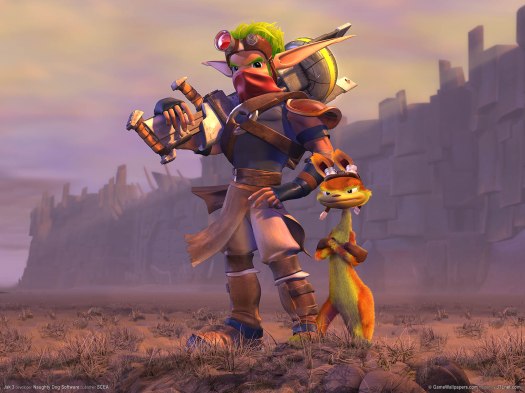 Considered “deviant” under the California law
Considered “deviant” under the California law
Sources:
• thatgamecompany (images)
• Naughty Dog (images)
• Metal Gear Wiki (images and info)
• Jak and Daxter Wiki (image)
